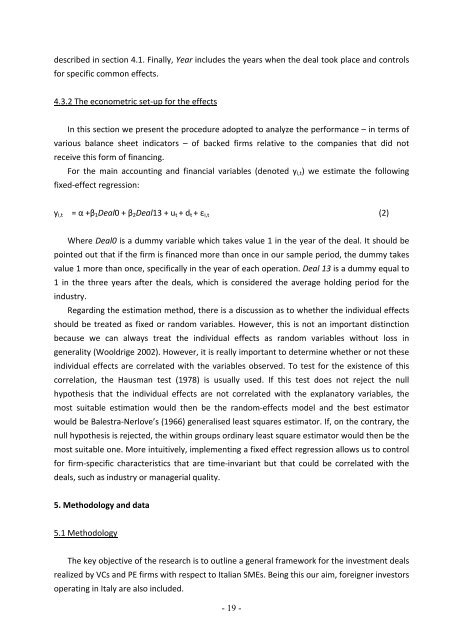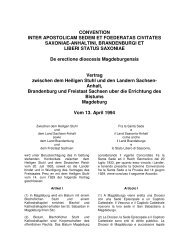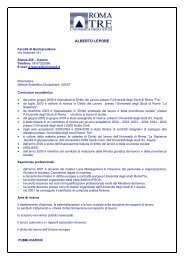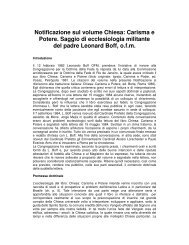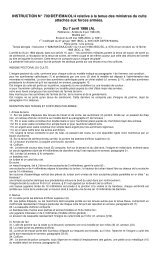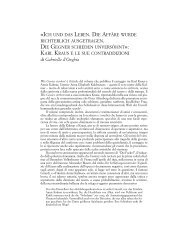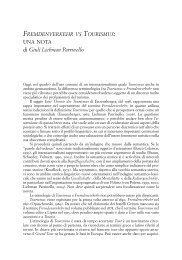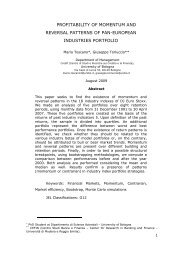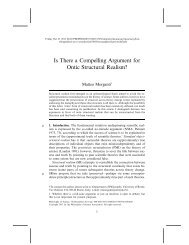Determinants and effects of Venture Capital and Private Equity ...
Determinants and effects of Venture Capital and Private Equity ...
Determinants and effects of Venture Capital and Private Equity ...
You also want an ePaper? Increase the reach of your titles
YUMPU automatically turns print PDFs into web optimized ePapers that Google loves.
described in section 4.1. Finally, Year includes the years when the deal took place <strong>and</strong> controls<br />
for specific common <strong>effects</strong>.<br />
4.3.2 The econometric set‐up for the <strong>effects</strong><br />
In this section we present the procedure adopted to analyze the performance – in terms <strong>of</strong><br />
various balance sheet indicators – <strong>of</strong> backed firms relative to the companies that did not<br />
receive this form <strong>of</strong> financing.<br />
For the main accounting <strong>and</strong> financial variables (denoted yi,t) we estimate the following<br />
fixed‐effect regression:<br />
yi,t = α +β1Deal0 + β2Deal13 + ut + dt + εi,t<br />
Where Deal0 is a dummy variable which takes value 1 in the year <strong>of</strong> the deal. It should be<br />
pointed out that if the firm is financed more than once in our sample period, the dummy takes<br />
value 1 more than once, specifically in the year <strong>of</strong> each operation. Deal 13 is a dummy equal to<br />
1 in the three years after the deals, which is considered the average holding period for the<br />
industry.<br />
Regarding the estimation method, there is a discussion as to whether the individual <strong>effects</strong><br />
should be treated as fixed or r<strong>and</strong>om variables. However, this is not an important distinction<br />
because we can always treat the individual <strong>effects</strong> as r<strong>and</strong>om variables without loss in<br />
generality (Wooldrige 2002). However, it is really important to determine whether or not these<br />
individual <strong>effects</strong> are correlated with the variables observed. To test for the existence <strong>of</strong> this<br />
correlation, the Hausman test (1978) is usually used. If this test does not reject the null<br />
hypothesis that the individual <strong>effects</strong> are not correlated with the explanatory variables, the<br />
most suitable estimation would then be the r<strong>and</strong>om‐<strong>effects</strong> model <strong>and</strong> the best estimator<br />
would be Balestra‐Nerlove’s (1966) generalised least squares estimator. If, on the contrary, the<br />
null hypothesis is rejected, the within groups ordinary least square estimator would then be the<br />
most suitable one. More intuitively, implementing a fixed effect regression allows us to control<br />
for firm‐specific characteristics that are time‐invariant but that could be correlated with the<br />
deals, such as industry or managerial quality.<br />
5. Methodology <strong>and</strong> data<br />
5.1 Methodology<br />
The key objective <strong>of</strong> the research is to outline a general framework for the investment deals<br />
realized by VCs <strong>and</strong> PE firms with respect to Italian SMEs. Being this our aim, foreigner investors<br />
operating in Italy are also included.<br />
- 19 -<br />
(2)


